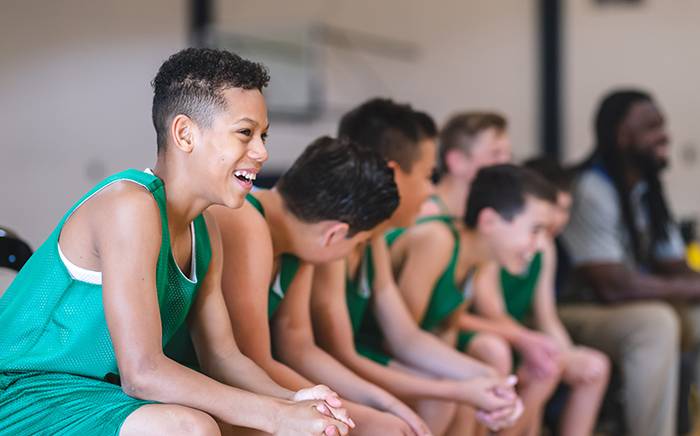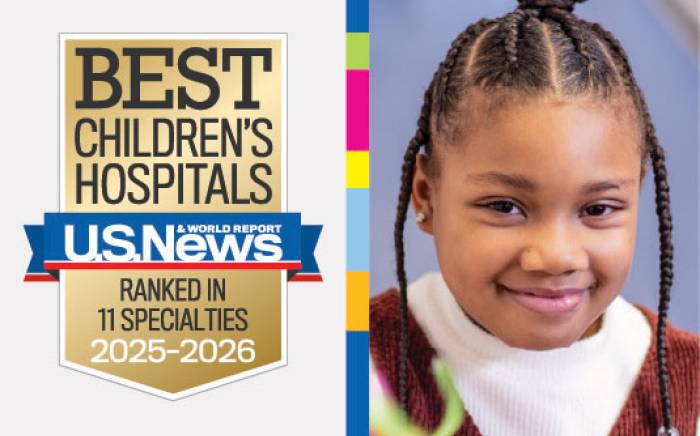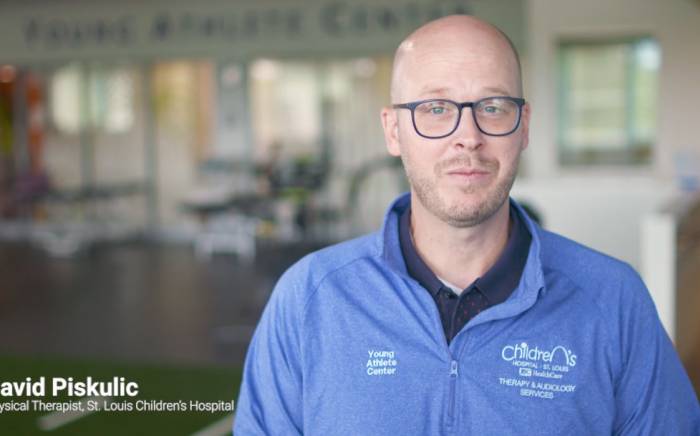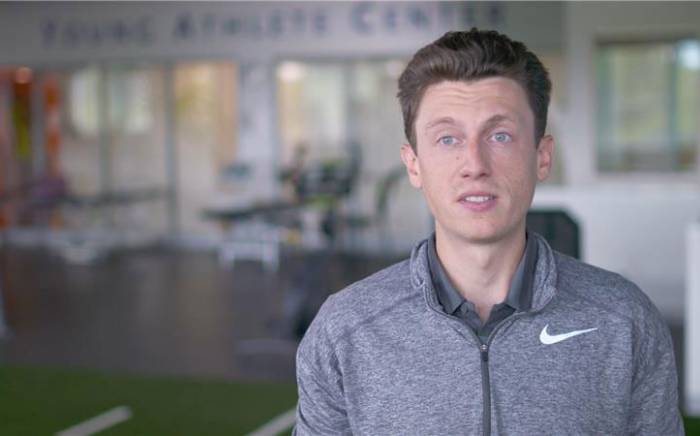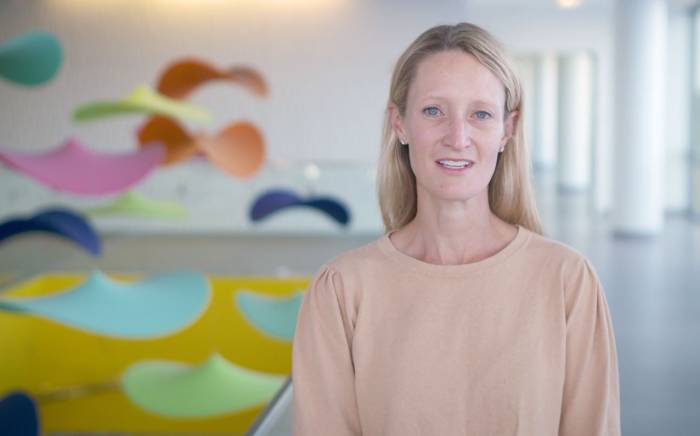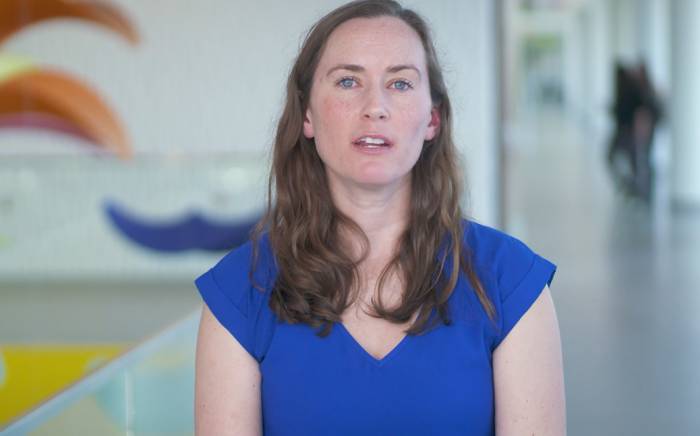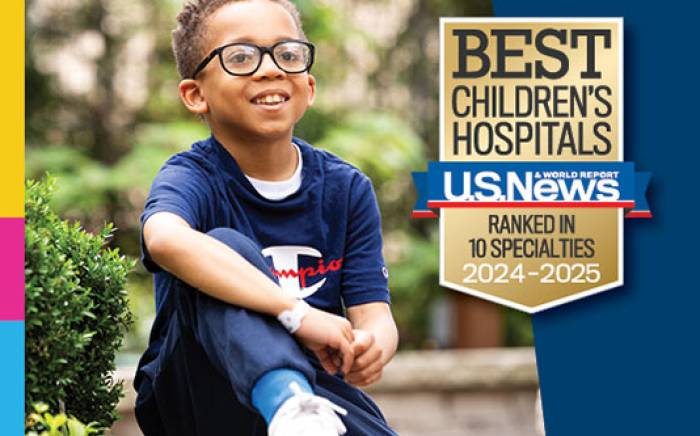With his mother being a nurse, Mark Miller, MD, was always intrigued by medicine. He knew from a young age that he wanted to become a physician.
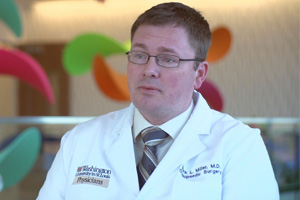 After receiving his medical degree from Harvard Medical School, Dr. Miller did his residency at the University of Washington in the Department of Orthopedic Surgery and Sports Medicine. He completed his fellowship in pediatric orthopedics at Washington University School of Medicine in St. Louis and decided to build a career there.
After receiving his medical degree from Harvard Medical School, Dr. Miller did his residency at the University of Washington in the Department of Orthopedic Surgery and Sports Medicine. He completed his fellowship in pediatric orthopedics at Washington University School of Medicine in St. Louis and decided to build a career there.
“I decided to stay as a faculty member because of the people,” Dr. Miller says. “I have really incredible mentors who continue to help me to improve my practice.”
As a Washington University pediatric orthopedic surgeon at St. Louis Children’s Hospital, Dr. Miller focuses on treating complex fractures of the upper limbs and lower extremities.
“I found the growth plate fascinating in its power and pathophysiology and enjoy taking care of children and families,” he says.
In his practice, he frequently sees the Lisfranc fracture, a foot injury that occurs when one or more of the metatarsal bones that attach to the middle of the foot is broken. The Washington University Department of Orthopedics is a major referral center in the Midwest for Lisfranc injuries.
Dr. Miller says the Lisfranc fracture can be misdiagnosed as a simple sprain yet can cause serious long-term complications if it isn’t treated correctly for proper healing.
“The foot has lots of moving parts that all need to be put in the right place,” Dr. Miller says. “The most common causes of these injuries in children are car accidents, falls from more than 20 feet, and Motocross and ATV accidents, which we see a lot of in Missouri.”
Navigating the Complex Rules of the Growth Plate
Another complex fracture in pediatric patients is a triplane fracture around the ankle. These often happen as the growth plate closes, Dr. Miller explains. In girls, the growth plate closes around age 13 to 14; for boys, that occurs around age 13 to 15. These type of fractures in the ankle that affect the growth plate require immediate attention. Without proper treatment, complications could include legs that grow crooked or unequal limb length.
“Timing is critical because these can potentially be life-altering injuries,” Dr. Miller says. “With these ankle injuries, the joint alignment must be perfect for long-term function.”
For all orthopedic injuries in children, it’s essential to know the rules of the growth plate and have an understanding of timing, he adds.
“Having experience with difficult fractures in children leads to better outcomes. We understand how to deal with the growth place so we can fix a fracture at the right time to minimize effects to the growth plate. Injury to the growth plate can result in growth plate arrest.”
Growth plate arrest can lead to the shortening and angulation of the bone, which can cause limping, deformity, and pain.
Dr. Miller often treats pediatric patients whose growth plates no longer function after an injury or have a congenital abnormality. He has extensive experience in limb deformities and limb lengthening.
“If a patient has growth arrest due to an injured growth plate, we surgically remove areas of the diseased growth plate to allow the limb to grow,” he explains. “If the growth plate is shut off, we perform a lengthening procedure to equalize leg length. After a leg lengthening procedure, our goal is that the legs are within a half inch of each other when the child is fully mature.”
Dr. Miller and his colleague Eric Gordon, MD, have one of the highest volume practices in limb lengthening procedures in the Midwest. During Dr. Miller’s fellowship in pediatric orthopedic surgery at Washington University, he performed numerous limb lengthening procedures and has continued these in his practice.
Advances in Limb Lengthening and Corrective Technologies
Dr. Miller says patients are benefiting from exciting innovations in limb lengthening and corrective technologies.
One of these advancements is the Precice® Ellipse Nail, an intramedullary limb lengthening system. This magnetic nail is surgically implanted into the limb after an osteotomy. Once implanted, caregivers use an external magnet in a remote control device to non-invasively lengthen the femur or tibia about 1 mm per day.
“We were one of the early adopters of this technology and it has revolutionized the way we treat patients,” Dr. Miller says. “While this device is meant for limb lengthening, we also use it to correct angular deformities. What’s exciting is we can correct leg crookedness at the same time as we’re lengthening the leg.”
Since the Precice nail device became available about five years ago, Dr. Miller and his colleagues have performed more than 100 procedures using it.
Another advancement in limb lengthening technology is the Taylor Spatial Frame, a circular fixator that allows surgeons to accurately move bones to their precise anatomical alignment. This external device fits around the limb and is attached to the bones with pins or wires that extend from the rings, through the skin and bone to the other side.
This device can be used for limb lengthening and deformity correction or to reposition a fractured bone.
“It’s ideal for younger patients with open growth plates or those with infections or other issues where we can’t use the magnetic Precice nail,” Dr. Miller says.
Returning Children to Optimum Function
Recovery for most orthopedic issues is closely tied to physical therapy, Dr. Miller adds. “We have a close relationship with the physical therapy department at St. Louis Children’s Hospital. The therapists work on joint motion and muscle strength. Our goal is to help kids function at the same level they had before an injury.”
Dr. Miller is inspired by the children he treats. “It’s a pleasure and a privilege to work with kids. Without exception, kids are extremely motivated to work hard to recover so they can get back to the monkey bars, soccer or whatever their daily routine was. My job is to provide the resources to help them get there.”


